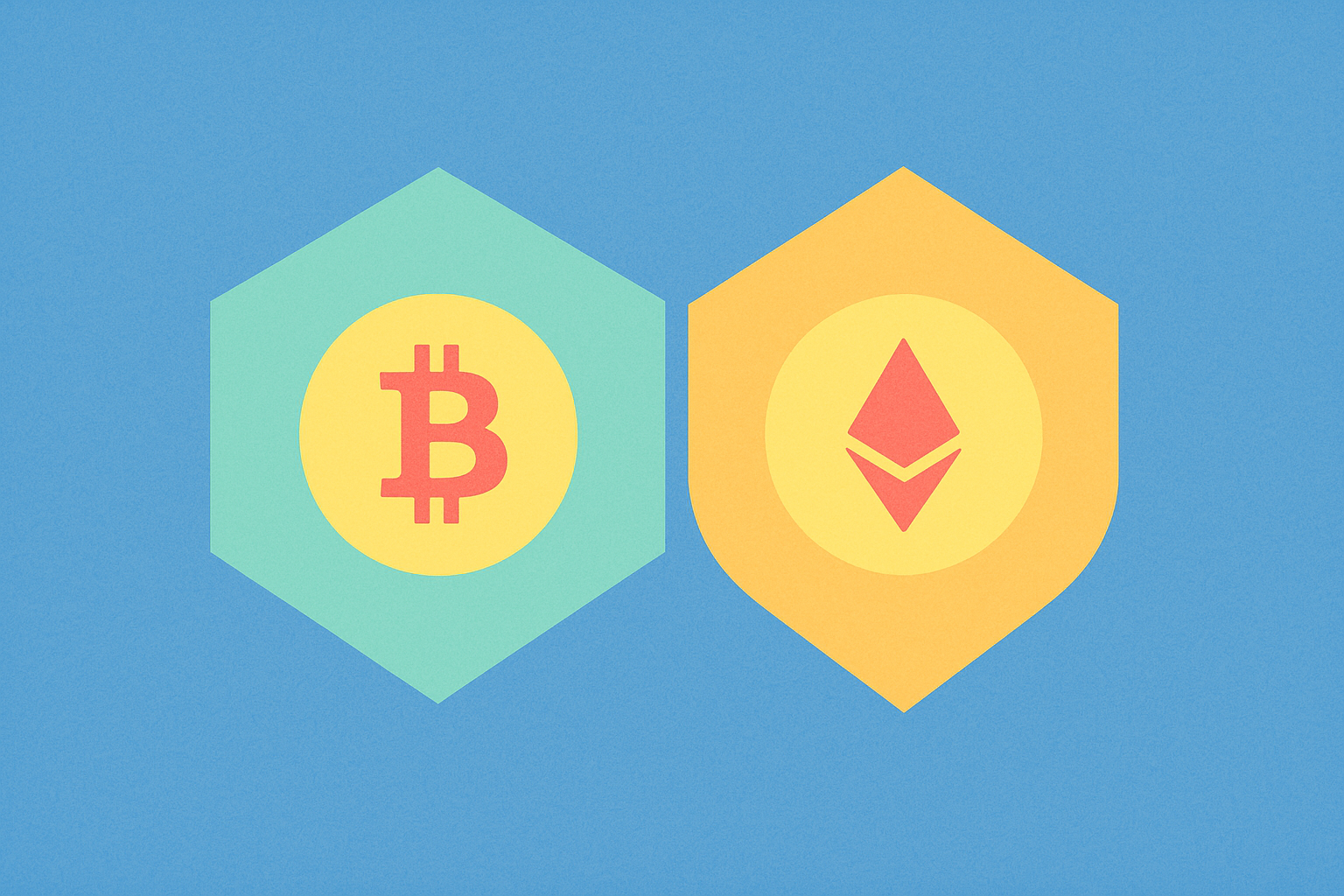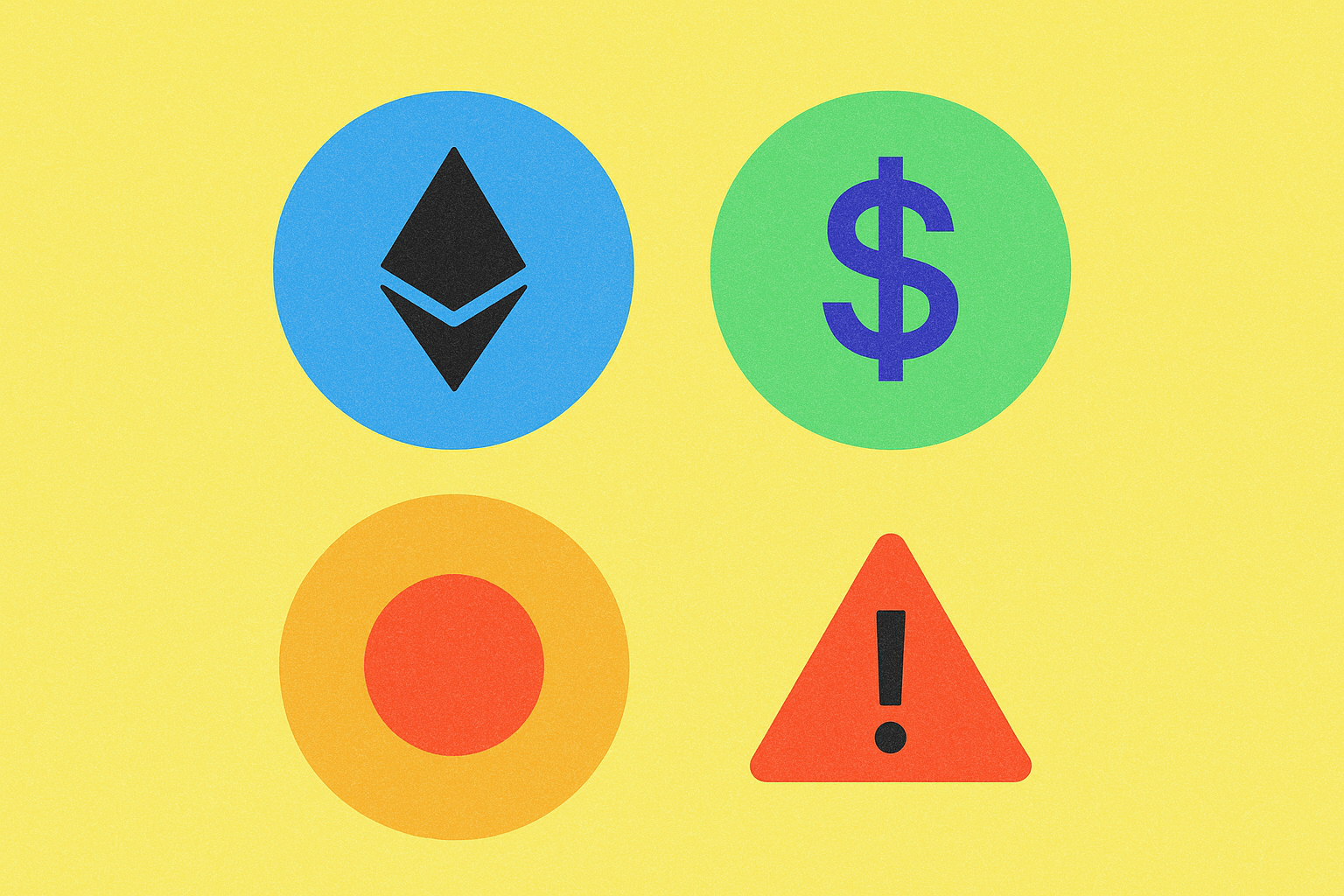ГаманецьConnect ($WCT): Основа зв'язку Web3

Токен WalletConnect (WCT) є внутрішнім активом мережі WalletConnect, який служить як її утиліта та монета управління. Мережа WalletConnect є протоколом, незалежним від ланцюга, що дозволяє користувачам підключати свої криптогаманці до децентралізованих додатків (dApps) на багатьох різних блокчейнах. З моменту запуску у 2018 році, WalletConnect допоміг здійснити понад 150 мільйонів безпечних підключень для мільйонів користувачів, охоплюючи сотні гаманців та тисячі dApps.
WCT був запроваджений на початку 2025 року на блокчейні Optimism. WCT виконує кілька ролей: він надає права управління спільноті, фінансує та забезпечує безпеку мережі, та стимулює учасників. Введення WCT відзначає нову фазу децентралізованого управління, надаючи спільноті прямий інтерес у майбутньому WalletConnect.
Що таке WalletConnect?
WalletConnect - це протокол зв'язку з відкритим вихідним кодом, призначений для зроблення взаємодії користувача з Web3 більш безшовною. Він дозволяє гаманцям та додаткам взаємодіяти через зашифровану систему передачі повідомлень, спонукану скануванням QR-коду або глибоким посиланням. Будучи повністю незалежним від ланцюга, WalletConnect підтримує всі основні екосистеми блокчейн, включаючи Ethereum (та його мережі другого рівня, такі як Optimism), Solana, Cosmos, Polkadot та Bitcoin. Метою протоколу є усунення тертя в підключенні користувачів до гаманців для додатків, з'єднуючи мережі за кулісами, щоб користувачам не довелося турбуватися про те, на якому ланцюзі вони перебувають.
Основна інфраструктура WalletConnect побудована на кількох ключових компонентах:
Децентралізована база даних (хешування зустрічі):Мережа використовує архітектуру розподіленої бази даних на основі хешування рендеву. Це дозволяє маршрутизувати та зберігати повідомлення надійним способом без покладанняся на будь-який окремий сервер або центральний пункт відмови.
Сервісні та шлюзові вузли:Глобальна мережа вузлів працює за протоколом. Ці сервісні вузли та вузли шлюзу пересилають зашифровані повідомлення між гаманцями та додатками, забезпечуючи безпечну передачу запитів та даних транзакцій.
Кінцеве шифрування:Усі комунікації в мережі WalletConnect є зашифрованими з кінця до кінця. Це означає, що лише підключений гаманець та додаток можуть бачити вміст кожної транзакції або повідомлення, захищаючи конфіденційність та безпеку користувача.
Як працює WalletConnect?
Підключення за допомогою QR-кодів:Коли додаток бажає взаємодіяти з гаманцем користувача, він відображає код WalletConnect QR. Користувач сканує цей код за допомогою свого додатка або розширення для браузера, сумісного з WalletConnect. Цей крок встановлює початкове посилання між гаманцем та додатком.
Послання ретрансляції:Після підключення мережа WalletConnect передає повідомлення між додатком та гаманцем в реальному часі. Реле-сервер (або децентралізована мережа вузлів) передає запити на транзакції від додатку до гаманця користувача.
Шифрований зв'язок:Усі повідомлення, що передаються реле, зашифровані. Це забезпечує те, що жодні зовнішні сторони (включаючи операторів реле) не можуть прочитати деталі транзакції або адреси гаманця. Тільки призначений отримувач може розшифрувати повідомлення.
Сумісність міжланцюжковогоWalletConnect працює на кількох блокчейнах. Навіть якщо гаманець користувача знаходиться на одному ланцюжку (наприклад, Ethereum), а додаток на іншому (наприклад, Solana), протокол автоматично обробляє підключення. Враження користувача залишається тим же: сканування коду та підписування транзакцій, без необхідності використання окремих інструментів для кожного блокчейна.
Цей підхід зробив WalletConnect критичним елементом інфраструктури Web3. Абстрагуючи складності багатоланцюгової зв'язності, він дозволяє будь-якому гаманцю безпечно взаємодіяти з будь-яким сумісним додатком через криптовалютну екосистему.
Токен WalletConnect (WCT): Утиліта та Токеноміка
Токен WalletConnect (WCT) - це власний токен мережі WalletConnect. Він був запущений на початку 2025 року на блокчейні Optimism. WCT виконує кілька ролей: він надає права управління спільноті, фінансує та захищає мережу, та надихає учасників.
WCT має фіксовану максимальну кількість в обігу 1 мільярд токенів. Постачання розподілене по різних категоріях для підтримки зростання та довгострокової стабільності. Ключові розподіли включають:
- Фонд WalletConnect (27%) – Утримується фондом для фінансування грантів на розвиток, проекти екосистеми та операції.
- Роздачі токенів (18.5%)– Зарезервовано для сезонних програм роздачі безкоштовних монет для винагородження ранніх користувачів, учасників та партнерів.
- Основна Команда (18.5%)- Виділено команді проекту та раннім учасникам (підлягає довгостроковому вестингу).
- Стейкінг та винагороди за продуктивність (17.5%) – Відкладено для стимулювання операторів вузлів обслуговування, розробників гаманців та інших активних учасників мережі через винагороди.
- Попередні спонсори та партнери (11.5%) - Виділено на ранніх підтримувачів та партнерів (також розподілено з часом).
- Розробка ядра (7%)– Присвячено постійним зусиллям у розвитку та технічним ініціативам.
Розподіл токенів серед членів команди, спонсорів та розробників підлягає багаторічному графіку розблокування (зазвичай 4-річний розблокування з 1-річним обривом). Ця концепція сприяє довгостроковій затримці та відповідності інтересів зацікавлених сторін успіху мережі.
Запуск WCT відзначився «екосистемним підходом». Токен почав своє життя як непередавальний, що означало, що власники спочатку не могли відправляти його зовні. Це забезпечило, що ранні токени WCT залишалися в системі WalletConnect, що сприяло участі в управлінні та стейкінгу без ринкової спекуляції. Після досягнення спільнотою ключових мережевих віх, управління було активовано, і WCT став повністю передавальним між гаманцями та платформами.
Оскільки WCT обмежено 1 мільярдом, він неінфляційний за конструкцією протягом перших кількох років. Нові токени WCT не будуть чеканитися протягом перших 3-4 років. Якщо пізніше буде потреба в додаткових коштах, громада може проголосувати за введення нового випуску або зміну постачання. Цей демократичний підхід забезпечує, що будь-яка майбутня інфляція токенів відбуватиметься лише з погодженням громади.
WCT Функціональність та Ролі Екосистеми
WCT є в центрі екосистеми WalletConnect. Використання токену включають:
Управління:Власники WCT становлять основу управління мережею. Заставивши свої токени, вони можуть запропонувати та голосувати за ключові рішення, такі як оновлення протоколу, фінансові пропозиції або зміни економічних параметрів. З часом, коли WalletConnect децентралізується, управління перейде від фонду до обраних громадою рад. Власники WCT будуть все більше визначати напрямок проекту.
Стейкінг та Безпека:WCT можна ставити на стейкінг, щоб забезпечити та підтримати мережу. Власники токенів можуть заблокувати свої WCT на періоди від кількох тижнів до кількох років. Стейкери отримують додаткові WCT у вигляді винагороди за забезпечення безпеки мережі. Довші терміни блокування та вищі ставки призводять до вищих винагород, що стимулює міцне зобов'язання. Процес стейкінгу також вирівнює власників з успіхом протоколу, оскільки заблоковані токени залишаються заблокованими до завершення терміну стейкінгу (з короткою затримкою розблокування після).
Винагороди та стимули:Значна частина WCT використовується для винагороди активних учасників. Оператори вузлів обслуговування (які забезпечують інфраструктуру) заробляють WCT на основі їхньої продуктивності та часу роботи. Також розробники гаманців та додатків можуть відповідати за винагороди WCT, сприяючи екосистемі. В цілому 17,5% виробництва призначено для стейкінгу та винагород за продуктивність. Ці винагороди допомагають стимулювати та підтримувати інфраструктуру мережі та сприяють участі.
Витрати та використання екосистеми:Основні послуги WalletConnect наразі працюють без комісій користувачів, що робить протокол легким у використанні. Однак WCT надає можливість в майбутньому вводити структури комісій. Наприклад, одна з запропонованих моделей - це комісія, залежна від користування (наприклад, комісія "активного щомісячного користувача") для застосунків або SDK, які використовують ретрансляційний сервіс. Будь-які такі комісії будуть розроблені таким чином, щоб їх оплачували користувані застосунки, таким чином, щоб кінцеві користувачі не сплачували за підключення. Будь-які пропозиції щодо комісій підлягатимуть голосуванню спільноти.
Airdrops & Зростання екосистеми:Розподіл airdrop (18,5% від загальної кількості) використовується для розподілу WCT у спільноті WalletConnect протягом кількох сезонів. Ці airdrop винагороджують давніх користувачів, розробників та партнерів, які підтримували екосистему. Наприклад, на ранніх раундах розподілу було видано десятки мільйонів WCT учасникам, які брали участь. Airdrops допомагають запускати залучення та забезпечують широку, децентралізовану базу власників токенів з першого дня.
Узагальнено, ці функції роблять WCT невід'ємним для зростання WalletConnect. За допомогою вирівнювання стимулів для операторів мережі, розробників та користувачів токен допомагає забезпечити постійний розвиток і активну участь в екосистемі.
Майбутнє WalletConnect та WCT
WalletConnect вилає багатофазну дорожню карту до повністю децентралізованої, масштабованої мережі. На ранніх етапах увага зосереджена на зміцненні фундаменту: запуску головної мережі, стейкінгу та мережі вузлів з дозволеним доступом. Майбутні етапи спрямовані на додавання передових функцій, таких як вузли обслуговування без дозволу, надання ідентичності користувача, NFT для додатків та гаманців, спонсорські транзакції та нові інцентивні моделі для гаманців та додатків. Кожен етап приносить протокол ближче до довіриливої, спільнотою керованої інфраструктури — з децентралізованим управлінням, відкритою валідацією та токеномікой, керованою учасниками мережі.
При еволюції мережі WCT залишатиметься в її основі. Спільнотами орієнтоване управління поступово братиме владу над щоденними рішеннями, підтримуване обраними радами, які контролюють такі сфери, як партнерства та розвиток. Цей децентралізований підхід гарантує, що рішення щодо WalletConnect дійсно відображають потреби його користувачів та учасників.
Висновок
У підсумку, WalletConnect є критично важливою частиною інфраструктури web3, що дозволяє безшовні взаємодії між ланцюжками. З введенням токена WCT, WalletConnect переходить до моделі, що працює за участю спільноти. Власники WCT отримують можливість брати участь у управлінні, заробляють винагороди за забезпечення безпеки мережі та допомагають у фінансуванні росту протоколу. По мірі того, як екосистема дозріває та розширюється, WCT буде відігравати важливу роль у підтримці та масштабуванні інфраструктури, яка з'єднує гаманці з додатками по всесвіту криптовалют.

XZXX: Всеобъемний посібник з BRC-20 мем-токена у 2025 році

Що таке гаманець Phantom: Посібник для користувачів Solana у 2025 році

Ethereum 2.0 у 2025 році: Стейкінг, Масштабованість та Екологічний Вплив

Що таке BOOP: Розуміння токену Web3 у 2025 році

2025 Рішення на 2-му рівні: Масштабованість Ethereum та оптимізація продуктивності Web3

Індекс сезону альткоїнів 2025: Як користуватися та інвестувати в Web3

Огляд Tap Crypto: Повний посібник із цифрового обміну

ENS Domains: Спрощення управління ідентичністю у Web3

Аналіз проблеми подвійного витрачання у сфері криптовалют

Вивчення мнемонічних фраз у сфері криптовалют

Інноваційне масштабування другого рівня для Ethereum: мільйонний прорив у майбутнє





